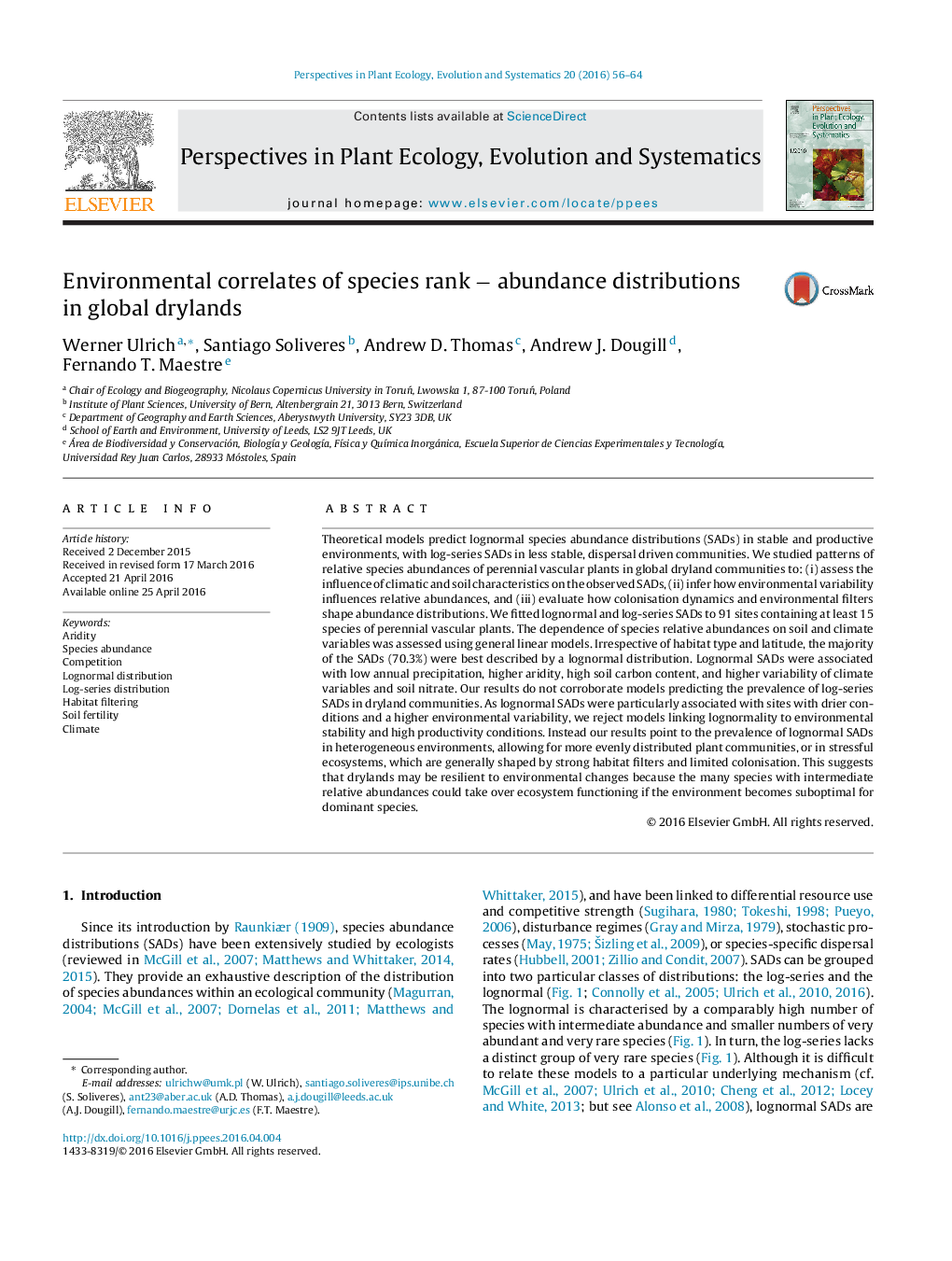| کد مقاله | کد نشریه | سال انتشار | مقاله انگلیسی | نسخه تمام متن |
|---|---|---|---|---|
| 4400916 | 1618600 | 2016 | 9 صفحه PDF | دانلود رایگان |
• We show that the majority of global dryland plant communities are best fitted by lognormal distribution.
• The lognormal was associated with low annual precipitation, higher aridity, and higher variability of climate variables.
• Our results contrast to previous theoretical models that predict log-series distributions governed by high species turnover.
• Communities with lognormal distributions seem to be more resistant to functional disturbance.
Theoretical models predict lognormal species abundance distributions (SADs) in stable and productive environments, with log-series SADs in less stable, dispersal driven communities. We studied patterns of relative species abundances of perennial vascular plants in global dryland communities to: (i) assess the influence of climatic and soil characteristics on the observed SADs, (ii) infer how environmental variability influences relative abundances, and (iii) evaluate how colonisation dynamics and environmental filters shape abundance distributions. We fitted lognormal and log-series SADs to 91 sites containing at least 15 species of perennial vascular plants. The dependence of species relative abundances on soil and climate variables was assessed using general linear models. Irrespective of habitat type and latitude, the majority of the SADs (70.3%) were best described by a lognormal distribution. Lognormal SADs were associated with low annual precipitation, higher aridity, high soil carbon content, and higher variability of climate variables and soil nitrate. Our results do not corroborate models predicting the prevalence of log-series SADs in dryland communities. As lognormal SADs were particularly associated with sites with drier conditions and a higher environmental variability, we reject models linking lognormality to environmental stability and high productivity conditions. Instead our results point to the prevalence of lognormal SADs in heterogeneous environments, allowing for more evenly distributed plant communities, or in stressful ecosystems, which are generally shaped by strong habitat filters and limited colonisation. This suggests that drylands may be resilient to environmental changes because the many species with intermediate relative abundances could take over ecosystem functioning if the environment becomes suboptimal for dominant species.
Journal: Perspectives in Plant Ecology, Evolution and Systematics - Volume 20, June 2016, Pages 56–64
